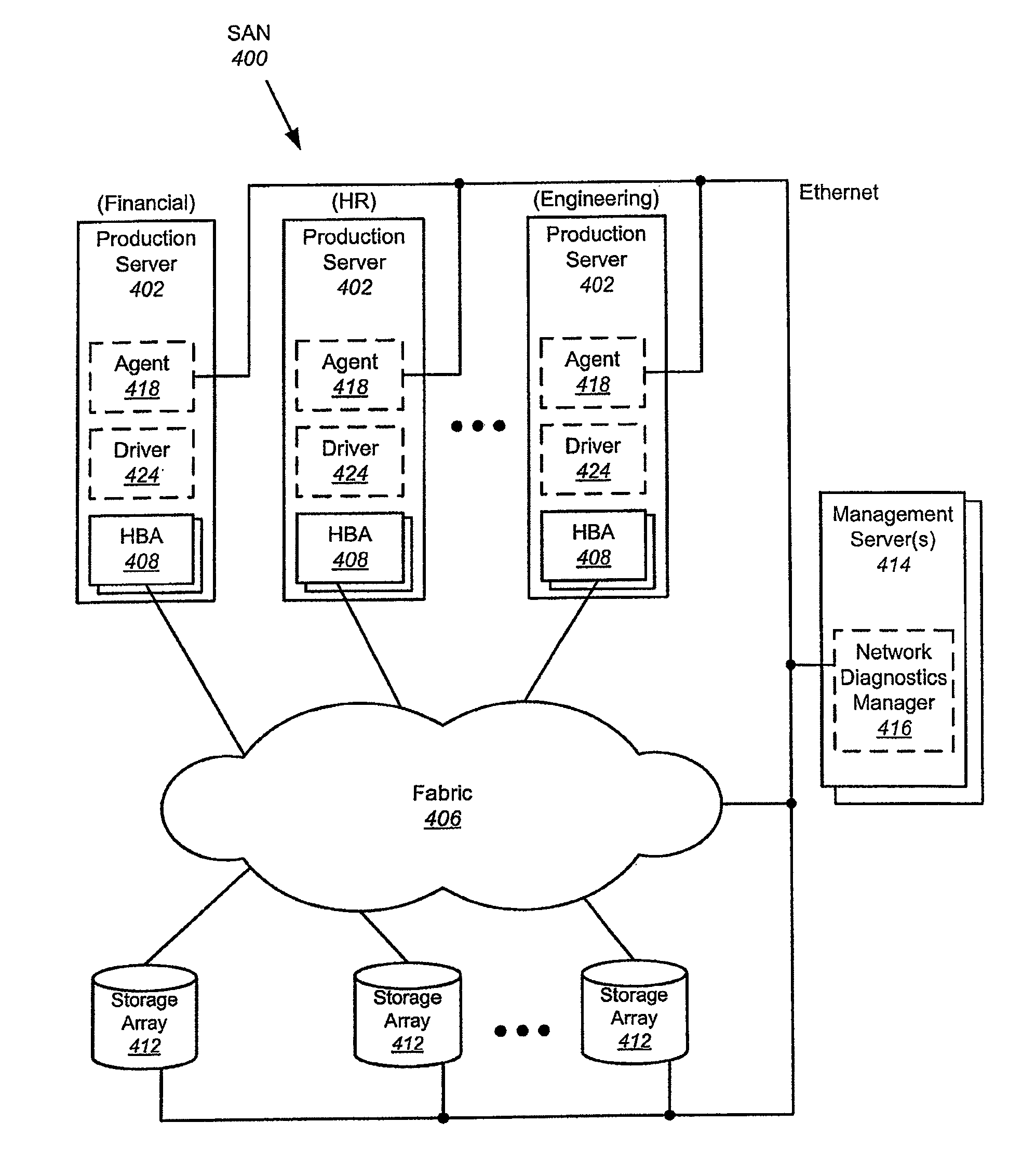Computer system input/output management
a computer system and input/output technology, applied in the field of computer system input/output management, can solve problems such as network trouble spots, errors and performance data collection, etc., and achieve the effect of improving performan
- Summary
- Abstract
- Description
- Claims
- Application Information
AI Technical Summary
Benefits of technology
Problems solved by technology
Method used
Image
Examples
first embodiment
[0053]the present invention to be described in greater detail relates to the determination of I / O command completion times and average I / O command completion times (latency) per logical driver in a SAN to enable optimization of storage allocations and improve I / O command completion times. It should further be understood that although embodiments of the present invention are described herein in terms of SCSI upper layer transport protocols and FC lower layer transport protocols for purposes of illustration only, embodiments of the present invention are applicable to other upper and lower layer transport protocols. Note also that embodiments of the present invention are not limited to fabric-attached storage, but apply to any SAN topology discoverable by the present invention, be it hub-based, arbitrated-loop based, or fabric based.
[0054]FIG. 2 illustrates an exemplary kernel 200 within a host computer for computing I / O command completion times and average I / O command completion times...
second embodiment
[0077]the present invention to be discussed in greater detail relates to the use of remote agents embedded in initiators and a network diagnostics manager application for collecting specific interesting negative initiator event data (diagnostics data) to enable a picture of the operational health of the SAN to be determined. To better identify problem areas in the network, agents are placed in servers acting as initiators in the SAN. The agents interact with relatively inexpensive HBAs, NICs or adapters (referred to herein as I / O controllers) to collect initiator event data rather than relying on expensive test box hardware. Although termed “initiator event data,” the collected event data doesn't necessarily relate to the initiator but may relate to other parts of the network such as the switches and targets (disk drives). A benefit of collecting initiator event data is that no direct access (and associated access rights) to the network or storage components is needed to collect thi...
third embodiment
[0106]the present invention to be described in further detail relates to the computation of an oversubscription value based on the demand for a device divided by the handling capacity of the device to help determine whether the device is oversubscribed and changes need to be made.
[0107]When SCSI devices are deployed, they are programmed with a command queue depth. This queue depth dictates how many commands can be queued up to the particular device at a given time. If there is demand for more commands and the queue is full, the other commands cannot enter the queue and need to wait for slots to open up. In large data centers, there are thousands of servers accessing thousands of devices. If there is too much demand for a particular device, its queue fills up, and applications must wait to be serviced. If the queue is too overloaded it could, for example, take ten seconds to open an e-mail. As a result, understanding how the queue is utilized is important to understanding looming per...
PUM
 Login to View More
Login to View More Abstract
Description
Claims
Application Information
 Login to View More
Login to View More - R&D
- Intellectual Property
- Life Sciences
- Materials
- Tech Scout
- Unparalleled Data Quality
- Higher Quality Content
- 60% Fewer Hallucinations
Browse by: Latest US Patents, China's latest patents, Technical Efficacy Thesaurus, Application Domain, Technology Topic, Popular Technical Reports.
© 2025 PatSnap. All rights reserved.Legal|Privacy policy|Modern Slavery Act Transparency Statement|Sitemap|About US| Contact US: help@patsnap.com



